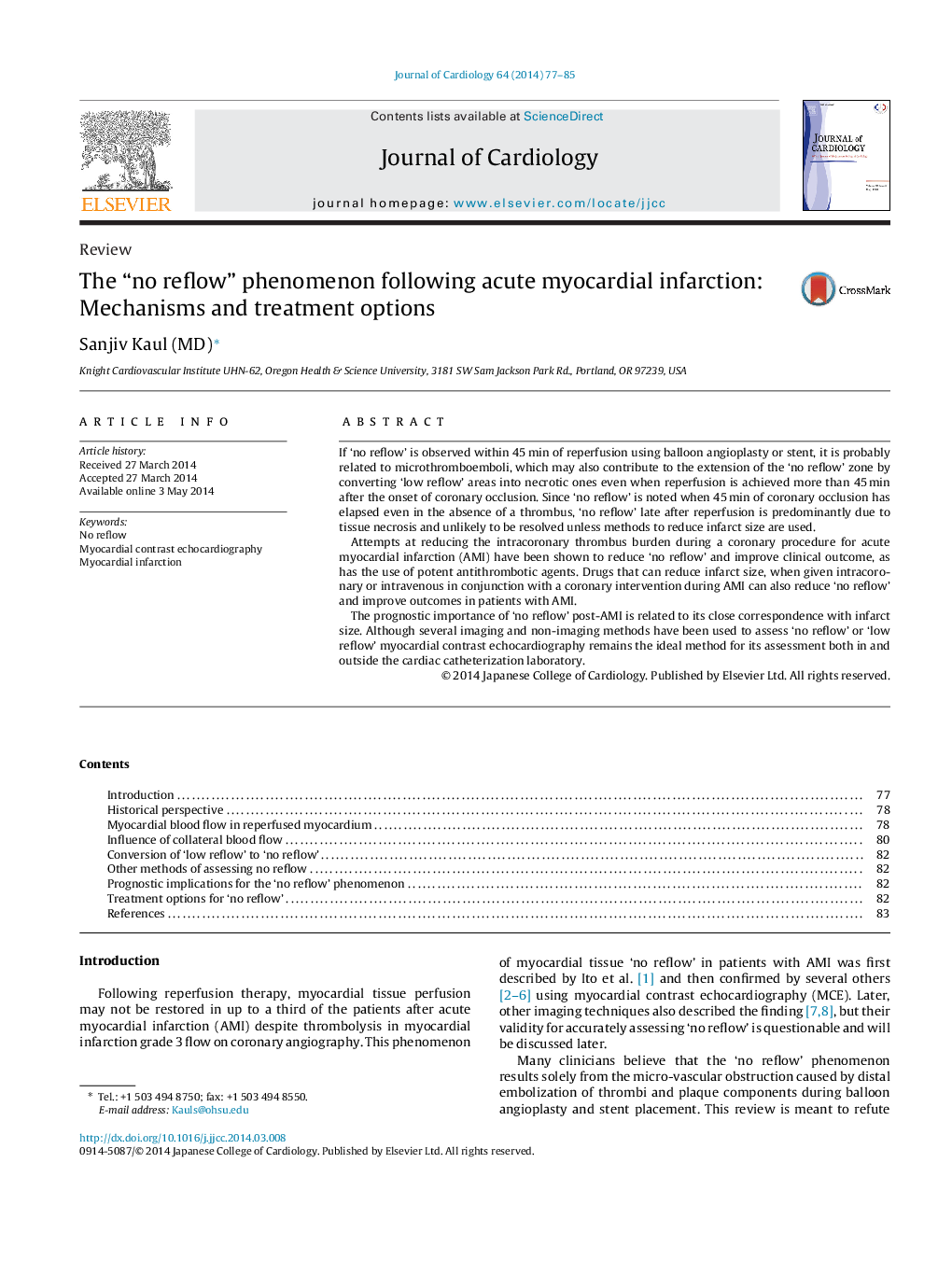| Article ID | Journal | Published Year | Pages | File Type |
|---|---|---|---|---|
| 2962954 | Journal of Cardiology | 2014 | 9 Pages |
If ‘no reflow’ is observed within 45 min of reperfusion using balloon angioplasty or stent, it is probably related to microthromboemboli, which may also contribute to the extension of the ‘no reflow’ zone by converting ‘low reflow’ areas into necrotic ones even when reperfusion is achieved more than 45 min after the onset of coronary occlusion. Since ‘no reflow’ is noted when 45 min of coronary occlusion has elapsed even in the absence of a thrombus, ‘no reflow’ late after reperfusion is predominantly due to tissue necrosis and unlikely to be resolved unless methods to reduce infarct size are used.Attempts at reducing the intracoronary thrombus burden during a coronary procedure for acute myocardial infarction (AMI) have been shown to reduce ‘no reflow’ and improve clinical outcome, as has the use of potent antithrombotic agents. Drugs that can reduce infarct size, when given intracoronary or intravenous in conjunction with a coronary intervention during AMI can also reduce ‘no reflow’ and improve outcomes in patients with AMI.The prognostic importance of ‘no reflow’ post-AMI is related to its close correspondence with infarct size. Although several imaging and non-imaging methods have been used to assess ‘no reflow’ or ‘low reflow’ myocardial contrast echocardiography remains the ideal method for its assessment both in and outside the cardiac catheterization laboratory.
